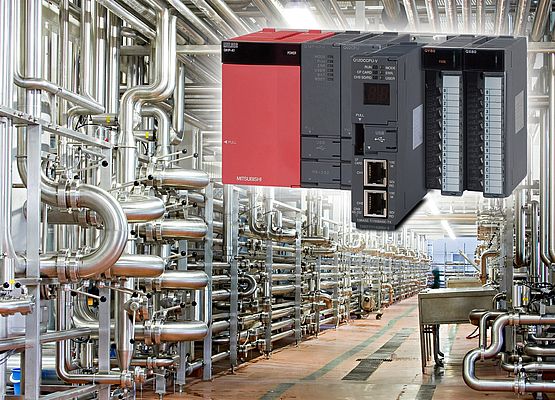The batch system runs the batch engine, with recipe management, within PAC. This removes the need for a PC based batch server, simplifying system architecture, reducing implementation speed and costs without sacrificing performance. Traditionally implementing effective batch control systems has meant a PC-based installation coupled within the real-time control loop often communicating to the shop floor controller via OPC, but there are inherent programming, integration and security issues around such an installation, as well as the lack of robustness of PCs on the plant floor. Now Mitsubishi Electric has addressed these problems with C Batch, a PAC-based batch control solution developed with process control specialist INEA. Compliant with ISA S88.01, the software delivers the essential features of recipe creation and management, creation of batches and control of their execution, automatic execution of recipes, and simultaneous execution of several recipes – all without leaving the familiar and secure PAC environment. The operator interface is provided by the Batch View software running on GOT series HMIs. The C Batch system runs the complete Batch engine, with recipe management, within the PAC. This removes the need for a PC based batch server, simplifying the overall system architecture, reducing implementation speed and costs without sacrificing performance. Furthermore, by operating within a PAC environment there is a reduced exposure to some of the traditional software and hardware based IT security issues. One example, which is often overlooked, is that the PAC hardware is locked away in an enclosure with limited direct personnel access unlike the PC which sits temptingly on a desk. In addition, by using a non-PC based system there is a greater resistance to malware infection. Naturally the C Batch solution provides all the features you would expect from traditional PC-based batch control software yet expands on this by enabling the execution of state-transition algorithms for individual phases. This extends the notion of superstates to improve the abstraction level and simplify programming, in short it makes it easier to implement and react to changes within the process. Further, the configurable behaviour related to propagation of holding transition from phases to recipe and vice versa provides flexible manipulation, while the recipe versus physical model consistency check increases safety. In addition the scaling of recipe parameters and consequently scaling of production batches is key to improving flexibility. And because C Batch is PAC-based, batch cycle times are minimised and deterministic speed of execution optimised, helping to improve productivity. AMD Development Manager, Thomas Lantermann, comments: “To meet the challenges of modern process control, it is essential to be able to develop and implement new recipes easily without creating the demand for complex and time-consuming programming. Of course there are PC-based solutions to do this, but many manufacturers prefer the greater simplicity and reliability of PAC-based systems. The use of PACs is increasing as many believe it brings a greater degree of application robustness to process control tasks by making use of industrially proven hardware, often reducing the risks of malware infection.”
Based Batch Control Solution
eliminates the need for PC’s on the plant floor
- by Mitsubishi Electric Europe Industrie Automation
- May 20, 2011
- 2513 views


















